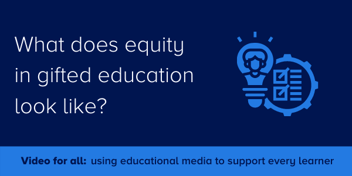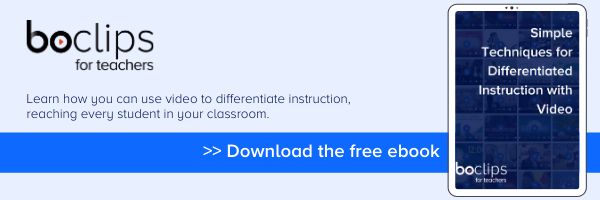Gifted students are pupils who demonstrate high achievement in an artistic, creative, leadership, or academic capacity. Their high achievement may be linked to specific or broad academic fields and pursuits. When it comes to equity, these students require special or additional activities, services, and opportunities that are not part of the standard curriculum or system.
Challenges for gifted and talented students
While gifted and talented students have an intrinsic motivation to learn, many develop asynchronously. This means that their social and emotional maturity can be quite different from their academic capability. So, while your high achieving 8th grader may be shining academically, he might also be distanced by his peers as a “show-off” or stressed from perfectionism and abundant extracurricular activities. This can lead to students who feel left out not only by their peers in a social context but in the classroom too. Gifted students often reinforce their learning on their own through reading, experiments, projects, or recognizing concepts at play in the real world. When their teacher utilizes reinforcement techniques for the benefit of the wider class, these gifted students can become easily bored or frustrated and become a distraction in the class.
<<Want to learn more about how you can amplify great teaching with video? Schedule a demo>>
Over time, gifted students who experience these levels of social stress and academic boredom can become so dissatisfied that their high achievement flips into underachievement. Without clear measures of progress or when left without challenges, gifted students simply quit trying. They make up 25% of underachievers and according to the Bill & Melinda Gates Foundation, 88% of high school dropouts left due to boredom despite maintaining passing grades.
Video: a tool for deeper learning
Teachers can meet the needs of these students by encouraging them to go above and beyond, while states and schools can invest in programs that support gifted students like Advanced Placement, project-based learning, or alternative learning environments.
Utilizing multimedia in the classroom can be an excellent way to offer gifted students an opportunity to utilize their higher-level thinking skills like analysis and evaluation. While their peers are reinforcing key concepts, a gifted student can be analyzing a performance, applying their learning to a lecture, evaluating a documentary short, or comparing two interpretations of an idea.
Usually, creating a separate lesson plan for every student every day just isn’t possible. At Boclips for Teachers, we encourage educators to create collections of videos aimed a taking their gifted students a little deeper into their learning. Teachers can assign a short analysis of nature versus nurture with videos from Neuro Transmissions, or task gifted learners with facilitating conversations around big ideas from TED.

No matter what subject or level you teach, on Boclips for Teachers you’ll find engaging videos that stretch and challenge gifted students. To discover more tips on how you can use video to reach every student in your classroom, download our free e-book which covers differentiating the learning content, process, product, and environment.
Bree Fabig
Bree has experience in multicultural and multilingual classrooms in the US, Japan, and Nepal and has taught primary, ESL, SAT prep, and secondary language arts.
- #Classroom
- #Video in Digital Learning
- #Educational Videos
- #Tips for Using Video
- #Video Content Partners
- #Boclips for Publishers
- #Issues in Education
- #Educational Videos by Subject Area
- #News and Announcements
- #Events & Holidays
- #Video and Teaching Tools
- #Teaching Methodologies
- #Education Videos
- #Video and Digital Literacy
- #Short Educational Videos
- #Instructional Design
- #Multimodal Learning
- #Video and Student Safety
- #Accessibility in Education
-3.png?width=390&height=223&name=Untitled%20design%20(2)-3.png)


.png?width=1152&height=660&name=Copy%20of%20Untitled%20Design%20(1).png)




